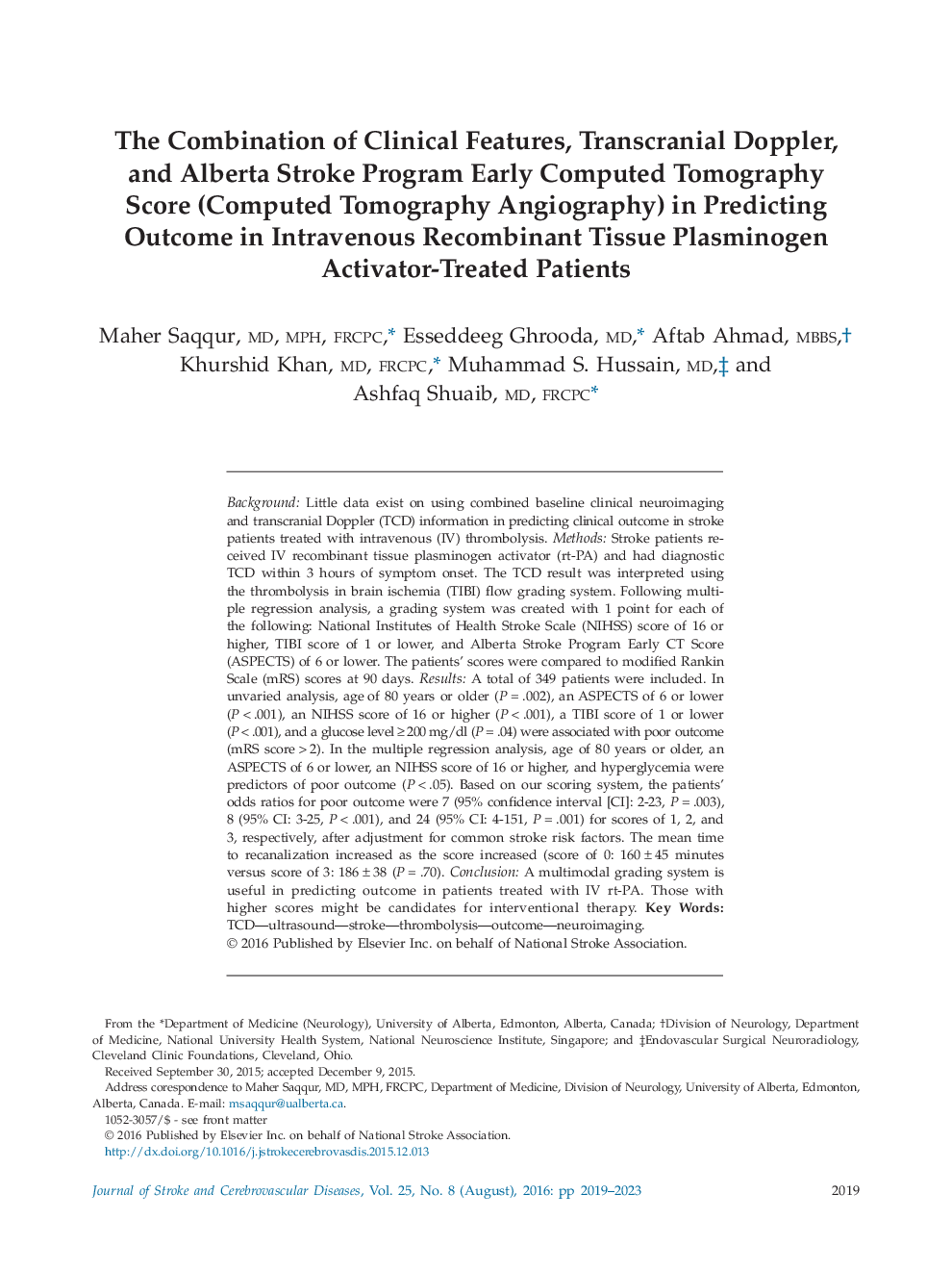| کد مقاله | کد نشریه | سال انتشار | مقاله انگلیسی | نسخه تمام متن |
|---|---|---|---|---|
| 2702210 | 1144523 | 2016 | 5 صفحه PDF | دانلود رایگان |
BackgroundLittle data exist on using combined baseline clinical neuroimaging and transcranial Doppler (TCD) information in predicting clinical outcome in stroke patients treated with intravenous (IV) thrombolysis.MethodsStroke patients received IV recombinant tissue plasminogen activator (rt-PA) and had diagnostic TCD within 3 hours of symptom onset. The TCD result was interpreted using the thrombolysis in brain ischemia (TIBI) flow grading system. Following multiple regression analysis, a grading system was created with 1 point for each of the following: National Institutes of Health Stroke Scale (NIHSS) score of 16 or higher, TIBI score of 1 or lower, and Alberta Stroke Program Early CT Score (ASPECTS) of 6 or lower. The patients' scores were compared to modified Rankin Scale (mRS) scores at 90 days.ResultsA total of 349 patients were included. In unvaried analysis, age of 80 years or older (P = .002), an ASPECTS of 6 or lower (P < .001), an NIHSS score of 16 or higher (P < .001), a TIBI score of 1 or lower (P < .001), and a glucose level ≥ 200 mg/dl (P = .04) were associated with poor outcome (mRS score > 2). In the multiple regression analysis, age of 80 years or older, an ASPECTS of 6 or lower, an NIHSS score of 16 or higher, and hyperglycemia were predictors of poor outcome (P < .05). Based on our scoring system, the patients' odds ratios for poor outcome were 7 (95% confidence interval [CI]: 2-23, P = .003), 8 (95% CI: 3-25, P < .001), and 24 (95% CI: 4-151, P = .001) for scores of 1, 2, and 3, respectively, after adjustment for common stroke risk factors. The mean time to recanalization increased as the score increased (score of 0: 160 ± 45 minutes versus score of 3: 186 ± 38 (P = .70).ConclusionA multimodal grading system is useful in predicting outcome in patients treated with IV rt-PA. Those withhigher scores might be candidates for interventional therapy.
Journal: Journal of Stroke and Cerebrovascular Diseases - Volume 25, Issue 8, August 2016, Pages 2019–2023
